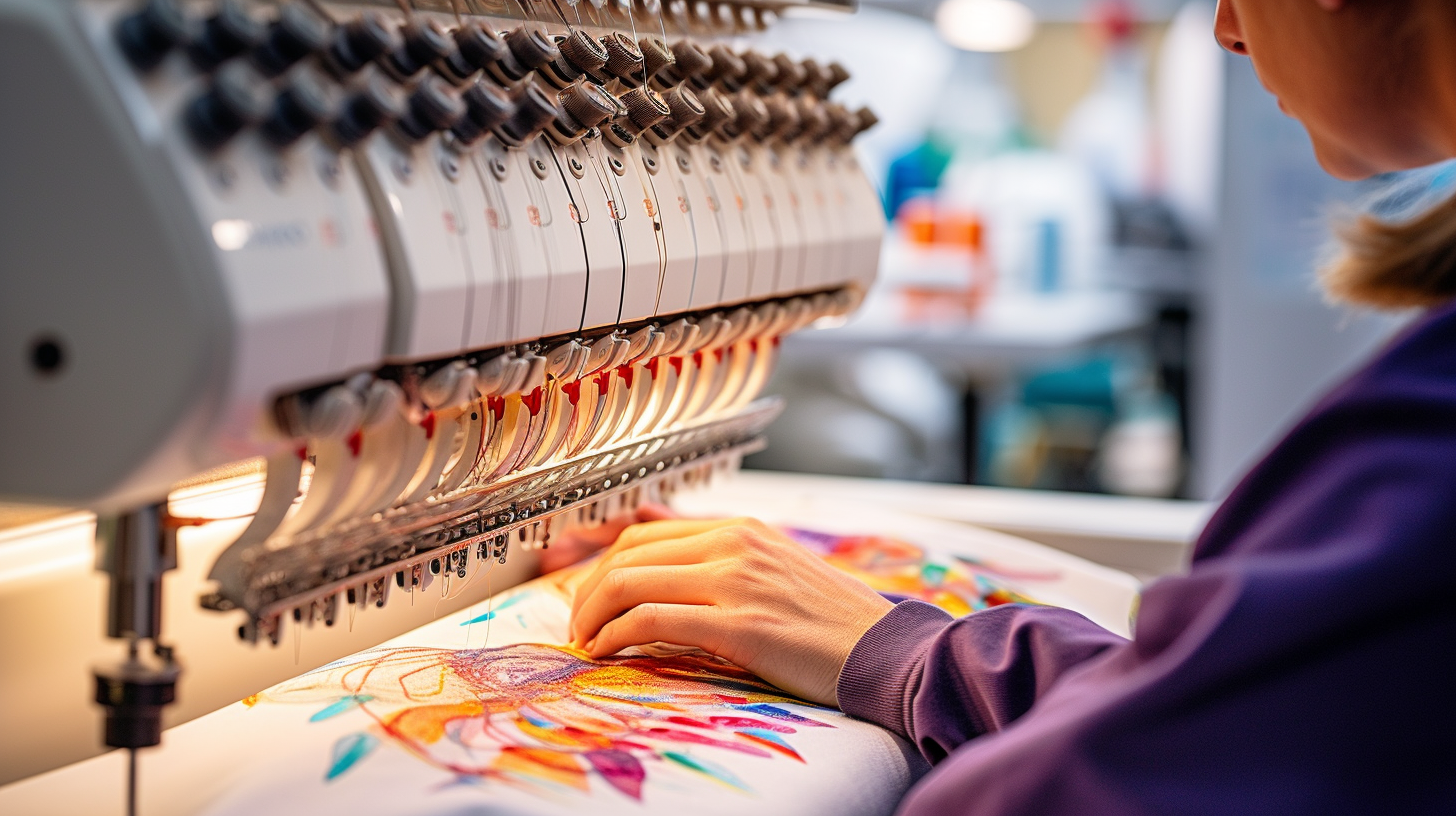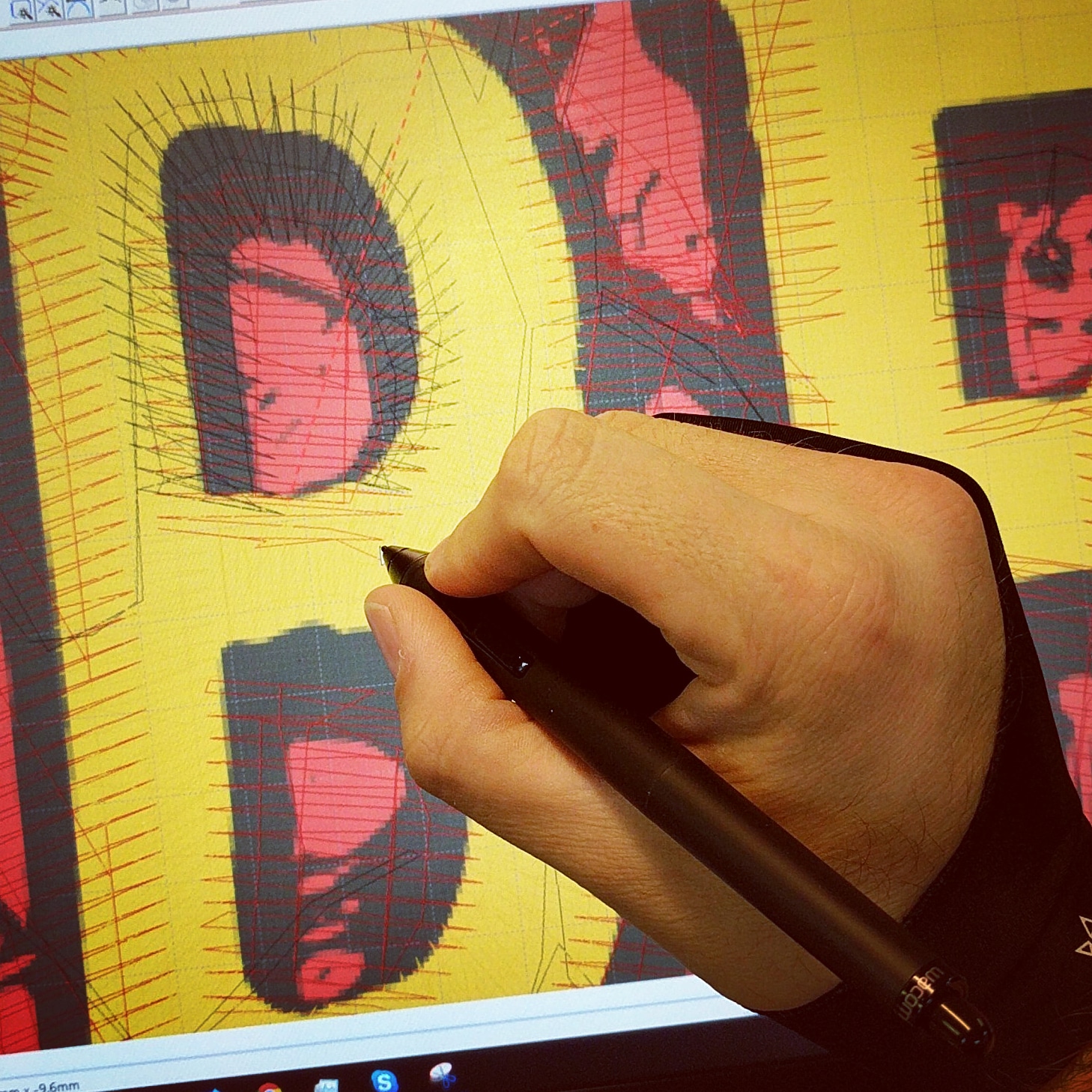Finest Digitizing for Embroidery: Improve Your Jobs
Finest Digitizing for Embroidery: Improve Your Jobs
Blog Article
Understanding the Embroidery Digitizing Refine: Your Ultimate Overview
Embroidery digitizing is a precise craft that calls for precision and know-how to convert intricate designs into digital layouts for device needlework. As craftsmens begin on this trip to grasp the embroidery digitizing process, an extensive understanding of the basics sets the foundation for quality.

Comprehending Embroidery Digitizing Fundamentals
Needlework digitizing fundamentals develop the foundation upon which complex styles are equated right into machine-readable styles for exact sewing. This first action in the embroidery digitizing procedure is crucial for guaranteeing that the final embroidered product is a loyal representation of the original design. Understanding embroidery digitizing fundamentals includes comprehending crucial ideas such as stitch types, stitch direction, thickness, rug, and draw payment.
Stitch types play an important role in identifying the aesthetic and textural result of the embroidered design. By selecting the ideal stitch kind, whether it be satin, fill, or running stitch, digitizers can accomplish the preferred effect and boost the total top quality of the needlework. Furthermore, stitch instructions affects the circulation and dimension of the design, while thickness establishes the spacing and insurance coverage of the stitches.
Moreover, rug sewing supplies stability to the layout by safeguarding the material and avoiding distortion throughout the embroidery procedure. Pull compensation is an additional important factor to consider to counteract the all-natural tendency of textile to contract when sewn. Grasping these needlework digitizing essentials is fundamental for creating professional-quality stitched products.
Selecting the Right Digitizing Software
Selecting the proper digitizing software is an important decision that substantially influences the efficiency and high quality of the needlework digitizing procedure. Digitizing for Embroidery. When choosing the best digitizing software application, it is vital to think about aspects such as the intricacy of layouts you intend to create, the user-friendliness of the software, the degree of consumer support provided, and the compatibility with your embroidery maker
There are different digitizing software program alternatives readily available in the market, ranging from basic programs for beginners to sophisticated software application for expert digitizers. Some preferred selections consist of Wilcom EmbroideryStudio, Hatch Needlework Software Program, and PulseID. These software supply a vast array of tools and features to help you develop detailed layouts with convenience.
Before making a decision, it is a good idea to check out the different software options via free tests or demonstrations to figure out which one finest suits your demands. In addition, reviewing reviews and looking for suggestions from skilled digitizers can offer valuable understandings into the strengths and weak points of each software (Digitizing go to my blog for Embroidery). By carefully reviewing your demands and comparing the attributes of various digitizing software program, you can make an educated choice that boosts your embroidery digitizing operations
Digitizing Tools and Techniques

Optimizing Layout Setup for Needlework
Understanding the ins and outs of style settings is basic in accomplishing ideal results in the needlework digitizing process, structure upon the foundation laid by understanding digitizing tools and methods. When maximizing design setups for embroidery, it is important to take into consideration elements such as stitch kind, thickness, rug, pull payment, and registration. Sew kind choice impacts the overall look of the style, with options like satin, fill, and running stitches providing different appearances and results. Thickness describes the spacing and density of stitches, impacting the design's insurance coverage and durability. Correct rug stitching gives security and avoids textile distortion, specifically for complex layouts or on stretchy materials. Draw compensation readjusts for material stretch official site during sewing, making sure accurate layout replication. Enrollment setups line up different elements of the layout properly, maintaining total style integrity. By fine-tuning these style settings, embroiderers can improve the quality and accuracy of their embroidered productions.

Troubleshooting Common Digitizing Issues
When running into common digitizing concerns during the embroidery procedure, it is important to recognize the origin and apply effective remedies promptly. One typical trouble is stitch density problems, where stitches might be also dense, triggering the textile to pucker, or as well sporadic, bring about voids in the style. Changing the stitch density settings in the digitizing software can help settle this problem.
Another frequent difficulty is string breaks throughout the needlework procedure. This can happen due to numerous reasons such as inaccurate stress settings, dull needles, or making use of low-grade thread. Making certain appropriate maintenance of the embroidery device, consisting of regular needle changes and tension adjustments, can reduce the event of thread breaks.
Moreover, design enrollment errors can result in misaligned aspects within the embroidery layout. Examining the design positioning in the digitizing software program and making essential adjustments before stitching can assist in preventing this issue. By dealing with these typical digitizing issues immediately and properly, you can make sure a smoother embroidery procedure and high-quality ended up items.
Verdict
In final thought, mastering the embroidery digitizing process requires a solid understanding of the essentials, the appropriate option of software, and knowledge of tools and strategies. Maximizing style settings and repairing usual digitizing problems are important steps in ensuring high-grade needlework results. By following these actions vigilantly, one can achieve accuracy and effectiveness in the digitizing procedure.
Report this page